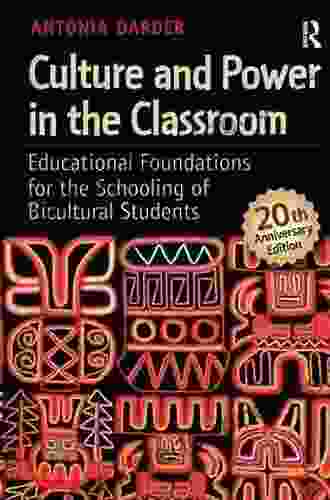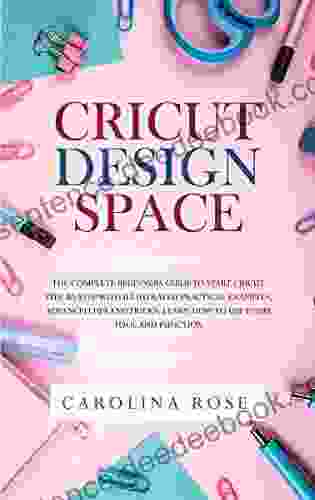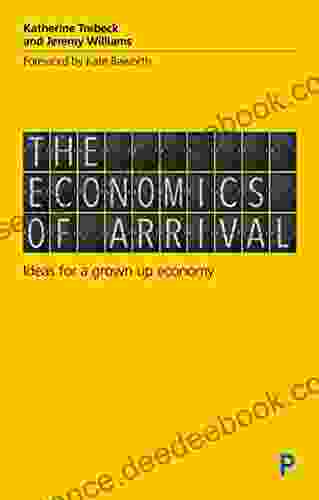Culture and Power in the Classroom: Exploring the Interplay of Identity, Equity, and Socialization

The classroom is a microcosm of the larger society, and as such, it is a site where culture and power intersect in complex and often contradictory ways. In this article, we will explore the interplay of culture and power in the classroom, examining how these factors shape student identities, experiences, and opportunities. We will also discuss the role of critical pedagogy in creating more equitable and empowering learning environments.
Culture in the Classroom
Culture is a complex and multifaceted concept that encompasses everything from our beliefs and values to our language and customs. It is something that we learn from our families, our communities, and the media. Culture shapes our worldview and our understanding of ourselves and others.
4.5 out of 5
| Language | : | English |
| File size | : | 4579 KB |
| Text-to-Speech | : | Enabled |
| Screen Reader | : | Supported |
| Enhanced typesetting | : | Enabled |
| Word Wise | : | Enabled |
| Print length | : | 284 pages |
When students enter the classroom, they bring their own cultures with them. These cultures may be different from the culture of the school or the teacher. This can lead to misunderstandings and conflict. For example, a student from a culture that values collectivism may be confused by a teacher who emphasizes individualism. Or, a student from a culture that values direct communication may be seen as rude by a teacher who expects students to be more reserved.
It is important for teachers to be aware of the different cultures that are represented in their classrooms. This awareness can help them to create more inclusive and welcoming learning environments. It is also important for teachers to be reflective about their own cultural biases.
Power in the Classroom
Power is a key aspect of any social relationship. It is the ability to influence or control others. In the classroom, power is often distributed unequally. The teacher has more power than the students. This power imbalance can be used to create a more equitable learning environment or to perpetuate existing inequalities.
Teachers can use their power in a variety of ways, including:
- Setting rules and expectations
- Grading students' work
- Providing feedback
- Disciplining students
It is important for teachers to use their power wisely and responsibly. They should use their power to create a more equitable learning environment for all students.
The Interplay of Culture and Power
Culture and power are closely intertwined in the classroom. Culture shapes how students experience and understand power, and power shapes how culture is transmitted and reproduced. For example, a teacher from a culture that values authoritarianism may be more likely to use a top-down approach to teaching, while a teacher from a culture that values egalitarianism may be more likely to use a more collaborative approach.
The interplay of culture and power can also lead to conflict. For example, a student from a culture that values collectivism may be resistant to a teacher's emphasis on individualism. Or, a student from a culture that values direct communication may be seen as rude by a teacher who expects students to be more reserved.
It is important for teachers to be aware of the interplay of culture and power in the classroom. This awareness can help them to create more inclusive and equitable learning environments.
Critical Pedagogy
Critical pedagogy is a type of teaching that seeks to empower students by raising their awareness of the social and political forces that shape their lives. Critical pedagogy teaches students to think critically about the world around them and to challenge the status quo. It also helps students to develop a sense of agency and to believe that they can make a difference in the world.
Critical pedagogy can be used to create more equitable and empowering learning environments in a variety of ways, including:
- Challenging the hidden curriculum
- Using culturally relevant materials
- Encouraging students to voice their opinions
- Empowering students to take action
Critical pedagogy is an essential tool for teachers who want to create more equitable and empowering learning environments. It can help students to develop the critical thinking skills, the sense of agency, and the belief in their own power that they need to succeed in school and in life.
Culture and power are complex and multifaceted concepts that play a significant role in the classroom. It is important for teachers to be aware of the different cultures that are represented in their classrooms and to use their power wisely and responsibly. Critical pedagogy can be used to create more equitable and empowering learning environments that allow all students to reach their full potential.
4.5 out of 5
| Language | : | English |
| File size | : | 4579 KB |
| Text-to-Speech | : | Enabled |
| Screen Reader | : | Supported |
| Enhanced typesetting | : | Enabled |
| Word Wise | : | Enabled |
| Print length | : | 284 pages |
Do you want to contribute by writing guest posts on this blog?
Please contact us and send us a resume of previous articles that you have written.
 Book
Book Novel
Novel Chapter
Chapter Text
Text Reader
Reader Library
Library Paperback
Paperback Newspaper
Newspaper Sentence
Sentence Bookmark
Bookmark Glossary
Glossary Foreword
Foreword Preface
Preface Annotation
Annotation Footnote
Footnote Tome
Tome Bestseller
Bestseller Classics
Classics Library card
Library card Autobiography
Autobiography Memoir
Memoir Reference
Reference Encyclopedia
Encyclopedia Thesaurus
Thesaurus Narrator
Narrator Character
Character Catalog
Catalog Borrowing
Borrowing Periodicals
Periodicals Study
Study Scholarly
Scholarly Reserve
Reserve Academic
Academic Reading Room
Reading Room Interlibrary
Interlibrary Literacy
Literacy Study Group
Study Group Dissertation
Dissertation Storytelling
Storytelling Textbooks
Textbooks Luke Allnutt
Luke Allnutt Meredith Webber
Meredith Webber Francis Srun
Francis Srun Tom Mangold
Tom Mangold Barbara Michaels
Barbara Michaels Lori D Ginzberg
Lori D Ginzberg Janet Walker
Janet Walker Andrew Steinmetz
Andrew Steinmetz Lorelei Eurto
Lorelei Eurto Martin Sandbu
Martin Sandbu Tamara Belinfanti
Tamara Belinfanti Nicolas Sabouret
Nicolas Sabouret Peyton Cockrill Lewis
Peyton Cockrill Lewis Mark Thomas
Mark Thomas Joseph Devlin
Joseph Devlin Maximilian Terhalle
Maximilian Terhalle Melissa Kennedy
Melissa Kennedy P W Green
P W Green Odile Cougoule
Odile Cougoule Tammy Gagne
Tammy Gagne
Light bulbAdvertise smarter! Our strategic ad space ensures maximum exposure. Reserve your spot today!

 Nikolai GogolString Class Fingerboard Geography: An Intonation, Note Reading Theory, and...
Nikolai GogolString Class Fingerboard Geography: An Intonation, Note Reading Theory, and... Joe SimmonsFollow ·4.9k
Joe SimmonsFollow ·4.9k Martin CoxFollow ·12k
Martin CoxFollow ·12k Beau CarterFollow ·11.1k
Beau CarterFollow ·11.1k Israel BellFollow ·5.6k
Israel BellFollow ·5.6k Ian MitchellFollow ·3.4k
Ian MitchellFollow ·3.4k Franklin BellFollow ·14.9k
Franklin BellFollow ·14.9k Grayson BellFollow ·15.8k
Grayson BellFollow ·15.8k Robert Louis StevensonFollow ·2.2k
Robert Louis StevensonFollow ·2.2k

 Darren Nelson
Darren NelsonLife of Napoleon Bonaparte, Volume II: His Rise to Power
**** Napoleon...

 Reed Mitchell
Reed MitchellLucy Sullivan Is Getting Married: A Tale of Love,...
Lucy Sullivan is a...

 Chuck Mitchell
Chuck MitchellBeginner's Crash Course on Python Language: Getting...
Python is a widely used programming...

 Henry Hayes
Henry HayesThreads Fitting For Every Figure: A Comprehensive Guide...
Finding the perfect fit can be a...

 Duane Kelly
Duane KellyA Comprehensive Cat Guide to Money: Feline Finance for...
In the world of finance, humans have...

 Jedidiah Hayes
Jedidiah HayesThe Sentimental Hippo And His Friends
Harvey the hippo was a very sentimental...
4.5 out of 5
| Language | : | English |
| File size | : | 4579 KB |
| Text-to-Speech | : | Enabled |
| Screen Reader | : | Supported |
| Enhanced typesetting | : | Enabled |
| Word Wise | : | Enabled |
| Print length | : | 284 pages |










